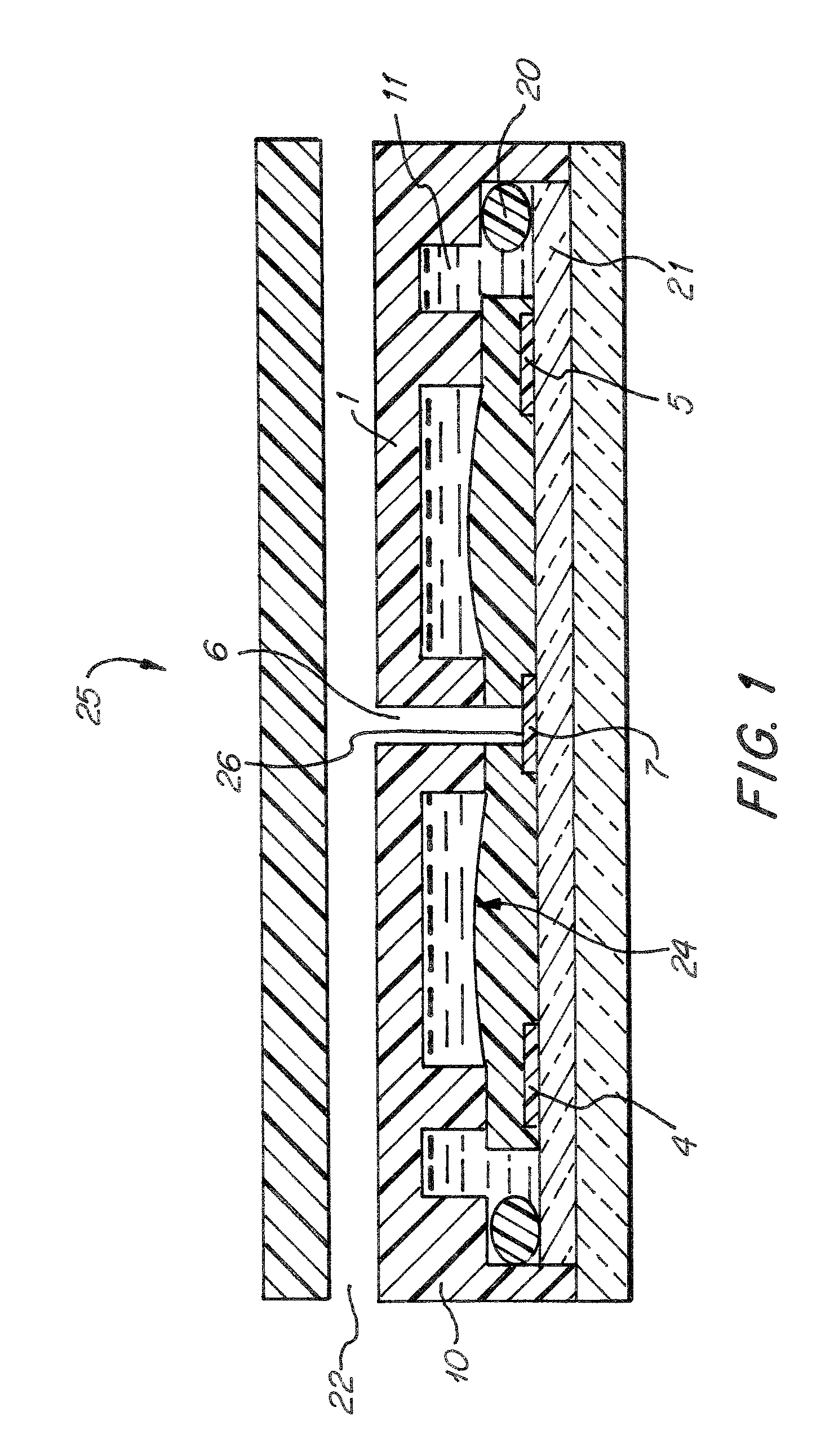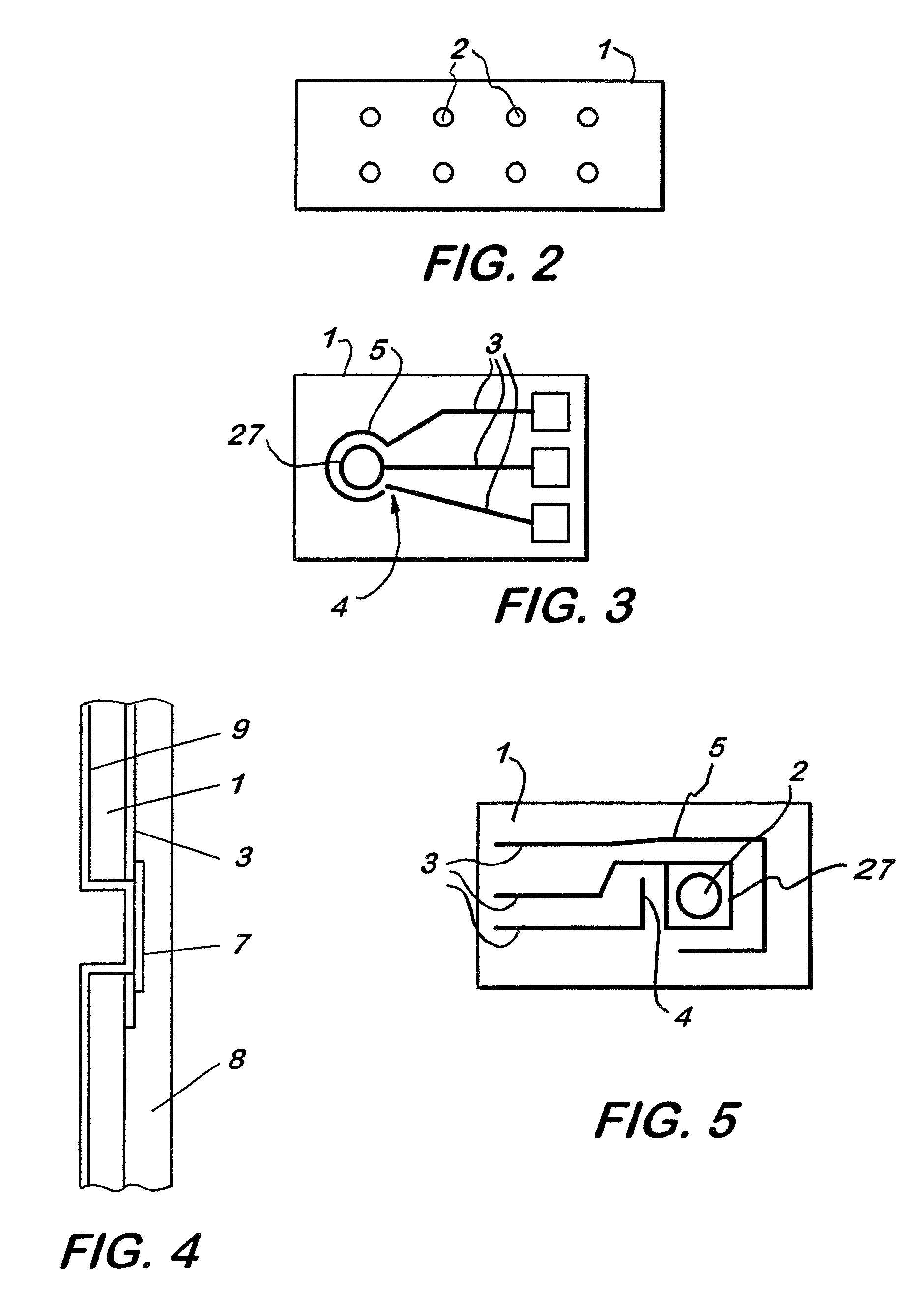Electrochemical sensor with dry ionomer membrane and methodfor making the same
- Summary
- Abstract
- Description
- Claims
- Application Information
AI Technical Summary
Benefits of technology
Problems solved by technology
Method used
Image
Examples
Embodiment Construction
[0060]FIG. 1 shows a cross-sectional view of one preferred embodiment of the sensor cell assembly (25). The sensor housing (10) contains a substrate (1) and sensor chip (21). The sensor chip is incorporated into the substrate so that it acts as a natural extension of the substrate upon assembly. A reference electrode (4), a counter electrode (5), and a sensing electrode (7) are disposed on the sensor chip (21). An ionomer membrane (24), i.e. Nafion®117 about 0.183 mm. thick, is positioned upon the sensor chip (21) so that it is in contact with each electrode and the substrate (1). A three phase contact area (26) is formed by gas inlet (6), i.e. of a circular shape, about 1.0 mm in diameter through the substrate (1) and ionomer membrane (24) immediately adjacent the sensing electrode (7). When a sample gas enters the housing at gas entrance (22) it travels to gas inlet (6), in order to pass through the substrate (1) and ionomer membrane (24). At which point the gas can enter a three-...
PUM
| Property | Measurement | Unit |
|---|---|---|
| Fraction | aaaaa | aaaaa |
| Fraction | aaaaa | aaaaa |
| Fraction | aaaaa | aaaaa |
Abstract
Description
Claims
Application Information
 Login to View More
Login to View More - R&D
- Intellectual Property
- Life Sciences
- Materials
- Tech Scout
- Unparalleled Data Quality
- Higher Quality Content
- 60% Fewer Hallucinations
Browse by: Latest US Patents, China's latest patents, Technical Efficacy Thesaurus, Application Domain, Technology Topic, Popular Technical Reports.
© 2025 PatSnap. All rights reserved.Legal|Privacy policy|Modern Slavery Act Transparency Statement|Sitemap|About US| Contact US: help@patsnap.com



